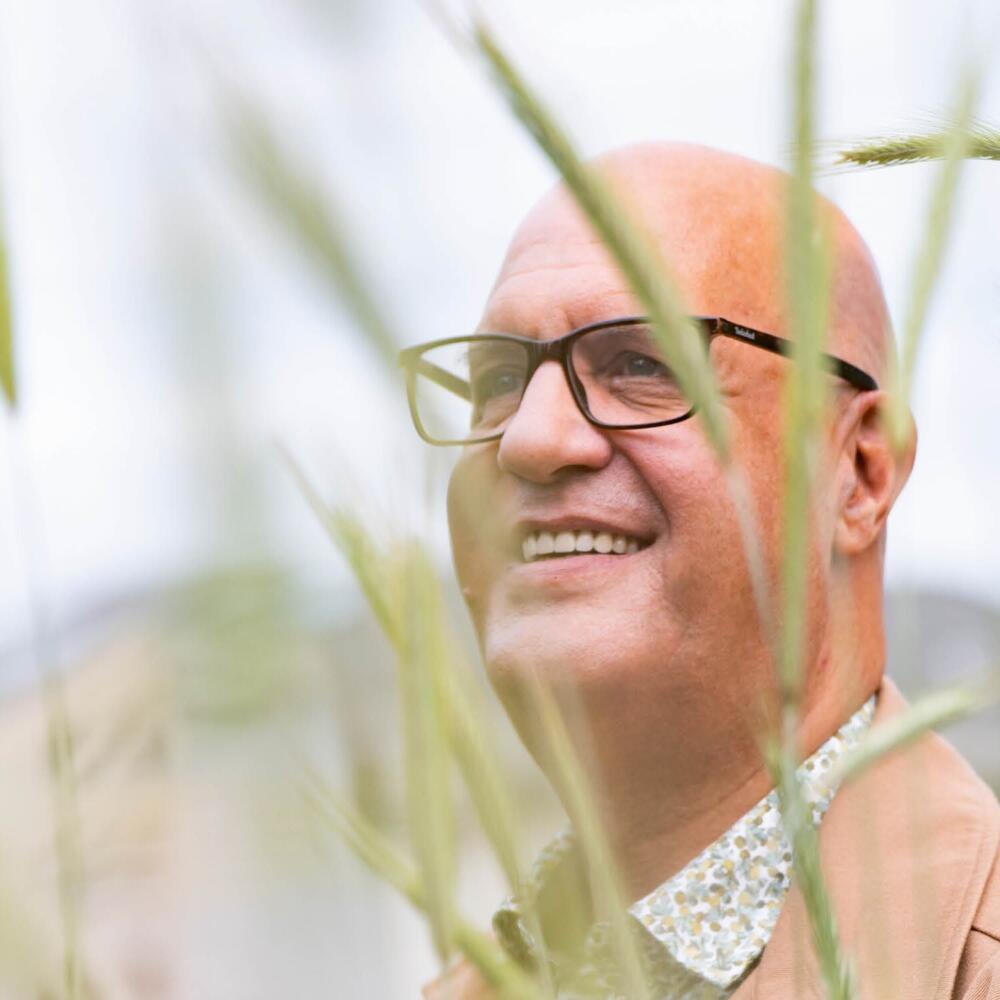Being Inclusive Means Learning to Be Human
Bart Vanmechelen is a member of the leadership team of the newly founded Section for Inclusive Social Development at the Goetheanum. Characterized by a sense of social responsibility and inspired by his enthusiasm for spiritual depth, he now sees inclusive social development as a humane work of art.
Franka Henn: In preparing for our conversation, you sent me a selfie in which you’re wearing a teeny woolen hat that points upwards like an antenna. I laughed so much! Whenever we see each other, I’m struck by your warmth and cheekiness. Where did you get this sense of humor?
Bart Vanmechelen: It is very alive in our family. You can’t take yourself too seriously. We like to be cheerful and joyful in company. My wife had knitted the hat, but it wasn’t finished yet. I put it on because I was cold, and then I noticed that I could shape it like an antenna. I liked the metaphor: me feeling connected with the world “up there.”
But there are two sides to our family. On the one hand, we are all very committed and conscientious. That means being reliable and available for others. My mother was a kindergarten teacher and later the principal of a school with many classes. My father was a social worker. They both came from humble families in Belgium and had the opportunity to study thanks to the church. That made a big impression on them. The priest visited the families, and if he had the impression that a child was intelligent, he helped them get higher education. So, during their entire professional life, my parents were filled with gratitude and wanted to give something back to society and the community. On the other hand, being grateful also means enjoying life, and humor was very important for us. It’s very Belgian. The art of humor is to put things in a different perspective and stay inwardly flexible.
Franka: Can you tell us a bit about your childhood environment and what shaped you?
Bart: The more I think about where I came from—how the landscape looked and what the family was like—the more relevant I think it is. I grew up in northern Belgium, close to the Dutch border. Geologically, this is a very old landscape shaped by the Ice Age and the sea. The sea isn’t close by today, but the landscape and soil are still quite barren. For instance, in my little village, we had a sand dune about 40 meters high. It was like a big sandpit where we could play. This is one of the dearest and most intense experiences that I remember from childhood. We’d walk with the kindergarten class about two kilometers to this sand dune and play in the sun the whole day. On the corner, there was a pilgrimage site, a little chapel sitting under large trees with a portrait of Mary with the child. This picture imprinted itself deeply into my soul. Being in the sun, out in nature, carried like the mother Mary carries the little child, being part of the whole natural world and the cosmos, belonging to it, and feeling safe.
The soil there was poor. My father’s father was a farmer, but at one point, the soil was not rich enough to sustain a farm. So my grandfather had to move with his family and find work in a factory. In the end, he died of pneumoconiosis from the dust in the factory. It’s a real tragedy when nature can’t sustain us. It’s risky and it’s dangerous. But this sparked my interest in sustainability, agriculture, and caring for nature. I grew up in a part of the village where the houses were built new for young families. We are a big family with uncles and aunts who all had children my age. I’m the oldest of four, and my aunt lived nearby, also with four children, and then there were friends and all their big families. So, I was always outside playing in nature with a lot of other children. That’s how I grew up.
This text is an excerpt from an article published in the (online exclusive) Goetheanum Weekly. You can read the full article on the website. If you are not yet a subscriber, you can get to know the Goetheanum Weekly for 1 CHF./€.
Recommendation No time to read? You can listen to this interview on our podcast Anthroposophy to the Point on Spotify, Apple Music, or the Das Goetheanum website.
Title image Bart Vanmechelen at the Goetheanum, Photo: Xue Li

